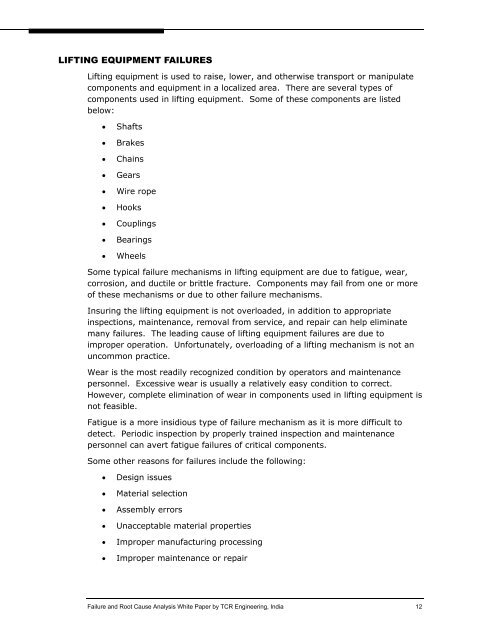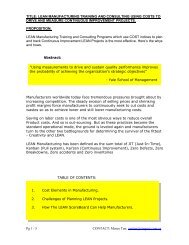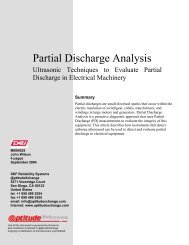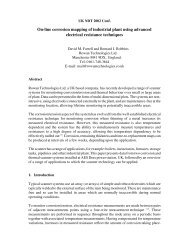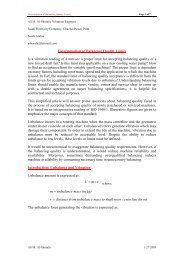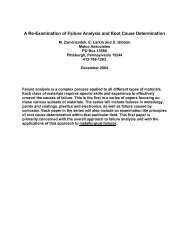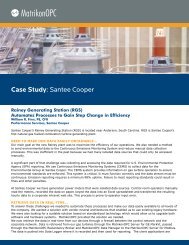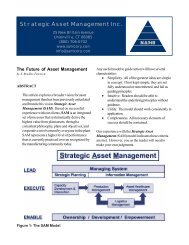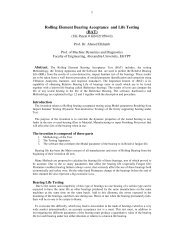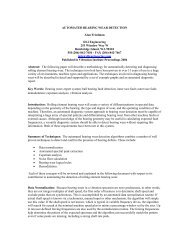Investigating Material and Component Failure - TCR Engineering ...
Investigating Material and Component Failure - TCR Engineering ...
Investigating Material and Component Failure - TCR Engineering ...
You also want an ePaper? Increase the reach of your titles
YUMPU automatically turns print PDFs into web optimized ePapers that Google loves.
LIFTING EQUIPMENT FAILURES<br />
Lifting equipment is used to raise, lower, <strong>and</strong> otherwise transport or manipulate<br />
components <strong>and</strong> equipment in a localized area. There are several types of<br />
components used in lifting equipment. Some of these components are listed<br />
below:<br />
• Shafts<br />
• Brakes<br />
• Chains<br />
• Gears<br />
• Wire rope<br />
• Hooks<br />
• Couplings<br />
• Bearings<br />
• Wheels<br />
Some typical failure mechanisms in lifting equipment are due to fatigue, wear,<br />
corrosion, <strong>and</strong> ductile or brittle fracture. <strong>Component</strong>s may fail from one or more<br />
of these mechanisms or due to other failure mechanisms.<br />
Insuring the lifting equipment is not overloaded, in addition to appropriate<br />
inspections, maintenance, removal from service, <strong>and</strong> repair can help eliminate<br />
many failures. The leading cause of lifting equipment failures are due to<br />
improper operation. Unfortunately, overloading of a lifting mechanism is not an<br />
uncommon practice.<br />
Wear is the most readily recognized condition by operators <strong>and</strong> maintenance<br />
personnel. Excessive wear is usually a relatively easy condition to correct.<br />
However, complete elimination of wear in components used in lifting equipment is<br />
not feasible.<br />
Fatigue is a more insidious type of failure mechanism as it is more difficult to<br />
detect. Periodic inspection by properly trained inspection <strong>and</strong> maintenance<br />
personnel can avert fatigue failures of critical components.<br />
Some other reasons for failures include the following:<br />
• Design issues<br />
• <strong>Material</strong> selection<br />
• Assembly errors<br />
• Unacceptable material properties<br />
• Improper manufacturing processing<br />
• Improper maintenance or repair<br />
<strong>Failure</strong> <strong>and</strong> Root Cause Analysis White Paper by <strong>TCR</strong> <strong>Engineering</strong>, India 12


